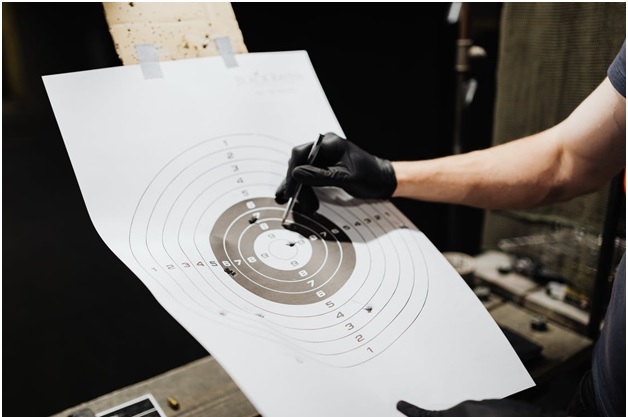Thinking about creating a home build with a lower parts kit for a Glock 19/ 23? With the right build kit, parts, frame, and jig jit, you can probably do so and it’s not as hard as you may have thought. Plus, there are plenty of resources out there to get you on your way.
But one of the main reasons to complete a home build from a parts kit and a frame or receiver is the value of customization.
The great thing about literally building your own platform is you can make it exactly how you want. For instance, we recently posted about the corrosion resistance and wear resistance of nitrided barrels, and whether you should use these in your build kits too.
This time, let's take a look at another vital component you might want to tack onto the end of your finished handgun - a compensator.
That’s Not Even Part of a Lower Parts Kit!
You might be wondering why we’d even mention a compensator when talking about lower parts kits for Glock 19/ 23 style handguns. Compensators are not only not included in lower parts kits - they’re hardly relevant at that stage of the build.
That much is true - you’re not wrong. But the topic of this blog is customization and not an enumeration of the parts that do and don’t come with lower parts kits.
And the fact of the matter is - moreover - that compensators can revolutionize your shooting experience.
Unlike many accessories, these are purely rooted in function. Once you shoot over a compensator, it’s unlikely you’ll ever go back.
Here’s what you need to know.
How Does a Glock Compensator Work?
Glocks are really popular handguns. That’s probably why you want to create a Glock-style handgun for yourself.
They are reliable, tough, accurate, and compatible with higher-capacity magazines than many other comparable handguns.
Here’s another thing: Glock pistols are made with polymer frames, which makes them substantially lighter than steel-framed handguns.
That’s a bonus for overall weight. It’s not a bonus for recoil. The lighter the gun, the more it kicks when you pull the trigger.
So the Glock polymer receiver has its drawbacks. That much is a certainty.
In this instance, though, recoil is a specific evil. We’re not solely concerned with the sensitivities of recoil-averse shooters.
Our concerns lie with muzzle jump, as should yours.
When you’re dealing with recoil, naturally some of that force causes your muzzle to jump up a little bit. This is called, as we have termed it, “muzzle jump,” although it is also called “muzzle rise.”
It has significant implications for shooters of all sorts, whether in competition or those who train for the purposes of self-defense.
The greater the recoil you’re dealing with - that is, the more the muzzle jumps with each shot, the more it will push your sights off the target.
This interrupts the sight picture, opens up your groups, confounds accuracy, and forces you to retrain your sights.
All of that takes precious time.
Compensators are special muzzle devices that, though they offer simple operation and basic mechanics, fundamentally change the handling of a pistol.
All compensators change the direction in which gases are ported at the muzzle. Many of them are arranged in a specific fashion that intentionally ports gases out the top of the muzzle.
For every action, there is an equal and opposite reaction. When you pull the trigger, one action is the bullet leaving the muzzle, along with a volume of gases.
The reaction is the force that pushes back into your wrists and arms, causing the muzzle to want to rise.
Compensators that port gases out of the top at the end of the barrel instead force the muzzle down. This does not entirely eliminate recoil, but it helps to substantially counteract muzzle jump.
Some compensators are particularly effective, too, being able to diminish felt recoil by as much as 50% and muzzle jump by an even larger percentage, all without adversely affecting shot power.
What’s the Main Point Here?

If you’re thinking about adding a compensator to your build when you get your initial lower parts kit for a Glock 19/ 23, but this is overall too wordy for you to internalize, here’s what you need to take away:
●Compensators reduce felt recoil.
●They do not adversely affect shot power.
●They help counteract muzzle jump, helping to keep your sights on target and enabling faster follow-up shots.
Ultimately, there are a number of significant benefits to adding a compensator to your handgun and no legitimate drawbacks.
Save on Lower Parts Kits for Glock 19/23 Pistols and Other Models
Looking for lower parts kits for Glock 19/ 23 style handguns? We carry these in addition to other build kits, parts, and accessories that fit Glock-style handguns, barrels, slides, and much more.
Take a look through our collection and get in touch with us at Sales@MCSGearup.com if you have any questions.

